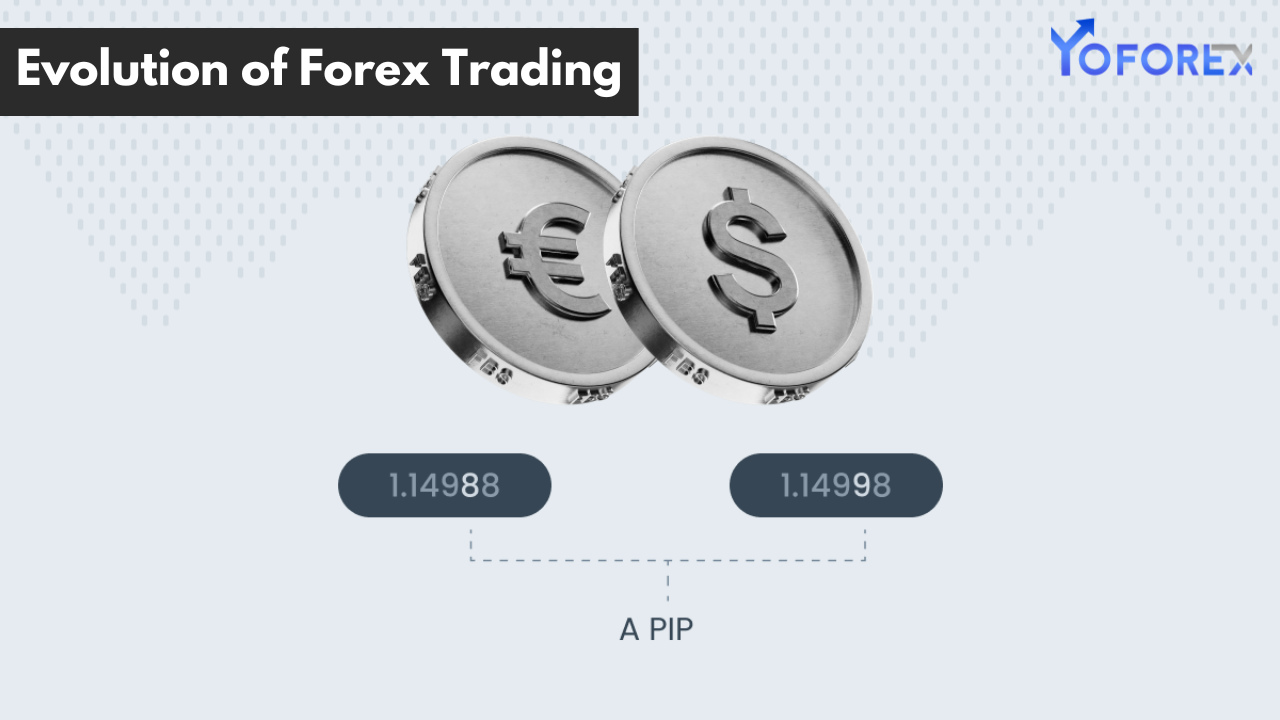Forex trading, also known as foreign exchange trading, has undergone a remarkable transformation over the years. From the bustling trading pits of the past to the sophisticated digital platforms of today, the forex market has evolved in response to advancements in technology, globalization, and changing market dynamics. This blog explores the history and evolution of forex trading, highlighting key milestones and the technological innovations that have shaped the industry.
The Early Days: Barter and Currency Exchange
Forex trading has its roots in the ancient practice of barter, where goods and services were exchanged directly. Over time, the invention of coins and paper money standardized trade and created the foundation for currency exchange.
Key Milestones:
- Ancient Times: The first known use of coins dates back to 600 BC in Lydia (modern-day Turkey).
- The Gold Standard (1870s): Currencies were pegged to gold, providing a stable framework for international trade.
- Bretton Woods Agreement (1944): Established a fixed exchange rate system with the US dollar as the anchor currency.
While these systems facilitated trade, they were limited in scope and flexibility compared to modern forex markets.

The Rise of Forex Trading Pits
In the early 20th century, forex trading was conducted through physical trading pits. These pits were located in financial hubs such as London, New York, and Tokyo, where brokers and traders gathered to execute trades using hand signals and verbal communication.
Characteristics of Trading Pits:
- Open Outcry System: Traders communicated buy and sell orders through shouting and hand signals.
- Physical Presence: Trading required brokers to be present on the floor.
- Limited Accessibility: Participation was restricted to financial institutions and large corporations.
Challenges:
- Lack of transparency and efficiency.
- High transaction costs and slow execution times.
- Limited participation for retail traders.
The Birth of Electronic Trading
The 1970s marked a turning point in forex trading with the collapse of the Bretton Woods system and the advent of floating exchange rates. This shift paved the way for a more dynamic and decentralized forex market.
Key Developments:
- Floating Exchange Rates (1973): Currencies began to trade freely against one another, driven by supply and demand.
- Introduction of Computers: Financial institutions started using computers to track and execute trades.
- Reuters Dealing System (1981): A digital communication platform that allowed traders to execute trades electronically.
The introduction of electronic trading increased efficiency, reduced costs, and laid the groundwork for the modern forex market.
The Emergence of Retail Forex Trading
The 1990s and 2000s saw the rise of retail forex trading, making the market accessible to individual traders for the first time. This shift was driven by technological advancements and the proliferation of internet connectivity.
Key Innovations:
- Online Trading Platforms:
- Platforms like MetaTrader revolutionized forex trading by providing retail traders with access to real-time price data, charts, and trading tools.
- Features such as automated trading and expert advisors made trading more efficient.
- Leverage and Margin Trading:
- Brokers began offering leverage, allowing traders to control large positions with a small amount of capital.
- Deregulation:
- Reduced barriers to entry enabled more participants to join the market.
Impact:
- Retail participation surged, increasing market liquidity.
- The forex market became more democratized, allowing individuals to trade alongside institutional players.
The Age of Algorithmic Trading
The 21st century brought the era of algorithmic trading, where advanced computer programs and algorithms are used to execute trades.
Features of Algorithmic Trading:
- High-Speed Execution: Algorithms can process and execute trades in milliseconds.
- Data-Driven Decisions: Algorithms analyze vast amounts of market data to identify trading opportunities.
- 24/7 Trading: Automated systems monitor and trade the market continuously.
Popular Strategies:
- High-Frequency Trading (HFT): Executes a large number of trades in a short time.
- Trend Following: Identifies and capitalizes on market trends.
- Arbitrage: Exploits price differences across markets or platforms.
The Role of Mobile and Social Trading
The advent of smartphones and mobile trading apps has further transformed forex trading, making it more accessible and convenient.
Key Developments:
- Mobile Trading Apps:
- Platforms like MetaTrader Mobile and eToro allow traders to manage trades on the go.
- Features include real-time notifications, charting tools, and one-click trading.
- Social Trading:
- Platforms enable traders to share strategies, follow successful traders, and copy their trades automatically.
- Promotes community engagement and learning.
Impact:
- Increased participation from younger and tech-savvy traders.
- Enhanced flexibility for traders to access the market anytime, anywhere.
The Role of Blockchain and Cryptocurrencies
Blockchain technology and the rise of cryptocurrencies have added a new dimension to forex trading. Cryptocurrencies like Bitcoin and Ethereum have become popular trading instruments, offering diversification opportunities.
Blockchain’s Impact on Forex:
- Enhanced transparency and security in trade settlements.
- Potential for decentralized forex trading platforms.
Challenges:
- Regulatory uncertainty and high volatility in cryptocurrency markets.
The Future of Forex Trading
The evolution of forex trading is far from over. Emerging technologies and changing market dynamics continue to shape the industry.
Future Trends:
- Artificial Intelligence (AI):
- AI-driven tools for market analysis and predictive modeling.
- Quantum Computing:
- Potential to revolutionize trading strategies with unprecedented computational power.
- Increased Regulation:
- Enhanced oversight to ensure fair and transparent markets.
- Sustainability:
- Growing focus on green trading practices and energy-efficient systems.
Conclusion
From the bustling trading pits of the past to the advanced digital platforms of today, forex trading has come a long way. Each phase of its evolution has been marked by technological advancements, increased accessibility, and changing market structures. As the forex market continues to evolve, traders must adapt to new tools and trends to stay competitive. Whether you’re a retail trader or an institutional participant, understanding the history and evolution of forex trading provides valuable insights into where the industry is headed.

